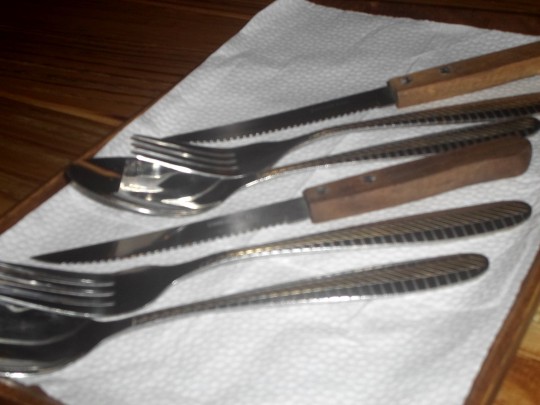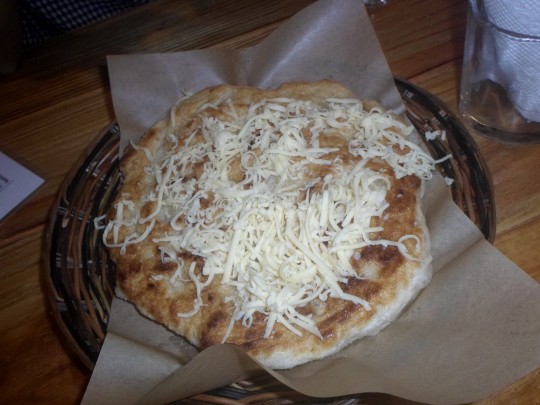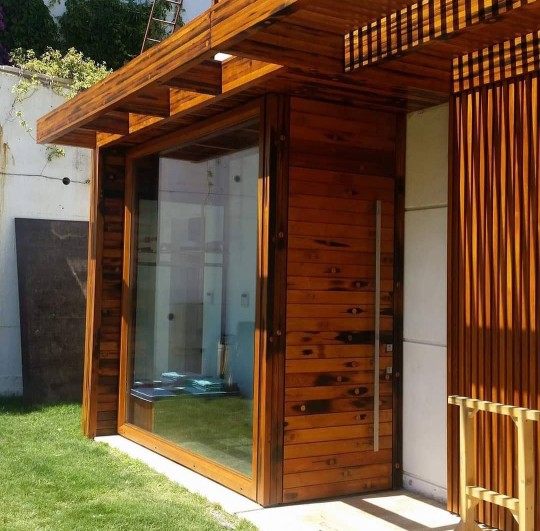#silim
Text

Kalim is so puppy and Silver is over here like
👁️🫦👁️
#Disney#twst#Disney twst#twisted wonderland#disney twisted wonderland#kalim al asim#silver#twst silver#silver vanrouge#kalim x silver#silver x kalim#silim??#kalver???
131 notes
·
View notes
Text

"As the setting sun gracefully casts its golden light upon the waters of Pasig River, a mesmerizing symphony unfolds—a dance of shimmering reflections that captivate the soul. In this fleeting moment of beauty, where nature's canvas merges with the flowing currents, we are reminded of the timeless harmony between light and water.

Here, along the banks of Pasig River, we witness a tranquil spectacle that whispers of peace and serenity, inviting us to embrace the beauty of the present moment."
#sunset sky#sunset paradise#sunsets#sunset#manila sunset#takipsilim#takip silim#agaw dilim at liwanag#istariray23#istariray23laboy#istariray23travel#istariray23moments#istariray23photography
8 notes
·
View notes
Text
Puerto Galera









#capture#picture#photo#photography#puerto galera#beach#food#langos#takip silim#digicam#digicam photography#sand#waves#ocean waves#digicam-blog
3 notes
·
View notes
Text
annem yatmadan once yanima gel dedi korkmali miyim
3 notes
·
View notes
Text

Bahce Mobilya Sandalye Silim Yag Uygulama
#Bahce Mobilya Sandalye Silim Yag Uygulama#bahce mobilya bakim yag uygulama#evdekorasyon#hotelrenovasyon#paradorparke#architecture#oteldekorasyon#ofisdekorasyonu#hoteldekorasyon#insaatproje#mobilyamagazazeminrenovasyon#evzeminparke#bursa bahce ıroko deck uygulama
0 notes
Text
Beton Silim Parlatma
Doğal taş üretiminde kullanılan malzemeleri doğal taş ve doğal ürünler oluşturmaktadır. Doğal taş üretiminde kullanılan ana malzeme, doğal ürünlerin su ile ufalanması ve öğütülmesi ile elde edilen betondur. Sizler beton parlatma, beton üzerinde cilalı bir yüzey oluşturacak şekilde doğal bileşenlerin kullanımını içerir. Doğal ürünlerden doğal taş üretme sürecine tamamen doğal işleme veya A-N işleme denir. A-N işlemede kullanılan ana malzemeler kireç, kum, ateş kili, mermer ve granit gibi ezilmiş ve toz haline getirilmiş doğal ürünlerdir. Su, doğal ürünlerin üretimi sırasında doğal olarak üretilir ve karbonatlar ve silikatlar gibi bazı mineraller içerir. Örneğin deniz tuzu, su ile reaksiyona girerek kalsiyum hidroksilapatit (Ca 7 HA) oluşturan kalsiyum ve magnezyum karbonatlar içerir. Bu reaksiyon, Doğal Topraklama Bileşiği (N GCC) adı verilen betonun parlatılması için zayıf ama yine de etkili bir ürün üretir. Doğal zemin bileşikleri, beton yüzeylerde düzgün bir parlak yüzey elde etmek için diğer minerallerle reaksiyona girer.
Kaliteli beton silim, doğal cilalama için su ve doğal ürünlerle öğütülür. N GCC, doğrudan alt tabakaya uygulanabilir veya diğer bileşenlerle karıştırılabilir ve katkı olarak adlandırılan daha güçlü bir karışım elde etmek için uygulanabilir. Doğal cilalama, mekanik cilalamaya kıyasla daha cilalı bir yüzey üretir; bu nedenle mekanik polisajdan daha uzun sürer ancak daha güçlü bir malzeme ile sonuçlanır. Doğal cilalama, birim zamanda daha az malzeme kullandığından mekanik cilalamaya göre daha az enerji kullanır. Doğal ürünler, suni cilalama işlemlerinde korozyona neden olan ağır metaller içermediği için de çevre dostudur.
Tamamen doğal işlemden elde edilen doğal taş S --> M, M ile işlenmiş doğal taşlardan ~5 kat daha güçlüdür, çünkü S işlenmiş malzemeden daha güçlü malzemeler üretmek için ek üretim adımları gerekli değildir. S işlenmiş malzemeden güçlü bir malzeme üretmek, tamamen doğal işleme gerektirir, çünkü M ile üretilen malzemelerin inşaat malzemeleri olarak kullanım için yeterince güçlü olması için gerekli ek üretim adımları yoktur. Tamamen doğal işleme, güçlü malzemelerle sonuçlanır, çünkü gücü yapay olarak artıran veya nihai ürünü zayıflatan safsızlıklar oluşturan ağır metaller kullanmadan yalnızca doğal olarak üretilmiş bileşenler kullanır.
Su, cilalanabilirlik için etkili ürünler üreten doğal olarak üretilen bazı mineraller içerdiğinden, beton A-N işlemi kullanılarak doğal olarak cilalanabilir. A-N işleme ile üretilen parlak kaplama, suni mermerden çok gerçek mermere benziyor çünkü birincisi sentetik değerli taşlardan çok gerçek değerli taşlara benziyor. Bu nedenle mimarlar, Çin'in Dream World Group Co Ltd. gibi endüstri liderleri tarafından yaygın olarak kullanılan kimyasal arıtma yöntemlerinin neden olduğu görsel kusurlara kıyasla gerçekçi doğası nedeniyle kimyasal olarak işlenmiş yapay beton yerine doğal olarak işlenmiş beton kullanmayı tercih ediyor.
https://silpayapi.com/
1 note
·
View note
Note
Silim!!
I was thinking about bees (don't we all), and was wondering if you may know/ have sources that may know about beekeeping in Sumer? I know hives have been recorded in Egypt, but wasn't sure what the words and practices were like for Mesopotamia
🐝
Silim! Turns out this answer took more research than I expected, since bees weren't prominent in Mesopotamia as they are today.
Wild bee honey has been harvested across the greater Near East and North Africa for many millennia, dating back at least to the last ice age. Bees were first domesticated and kept in manmade hives around the third millennium BCE in Egypt. They were used for pollination of crops as well as honey production, and honey was both a significant economic product in Egypt (people sometimes paid their taxes in honey!) and a major export from there.
However, beekeeping didn't arrive in Mesopotamia until after the Sumerian period. The earliest references to beekeeping in cuneiform literature come from after 1000 BCE, long after Sumerian was no longer the major spoken language of the region, and bees appear rarely or never in pre-1000 BCE Mesopotamian art.
There are a number of references to honey in Mesopotamian literature; usually it is used as a metaphor for opulence, rarity or sensual pleasure. For example, multiple balbale to Inanna make reference to honey: In Shu-Suen B, it says lale dangega / e kinua lal hab duggaba "let me bring you honey / in the bedchamber dripping sweetly with thick honey" while the Song of the Lettuce has a whole long section about the lu lale "honey-man" shuni lale merini lale "with honey hands, with honey feet". (This "honey-man" is intended to be alluring and praiseworthy, not sticky and gross.) But words like lal "honey" could also mean "date syrup" or other sugary foods, so it's not always clear if specifically bee honey is meant. (I've previously answered about the Sumerian words for "honey" and "beeswax" here.)
In contrast to honey, I can't find a single reference to bees themselves in the entirety of the ETCSL, nor in any of the dictionaries I have access to. They may have had a word for the bee, but given the lack of beekeeping or use of bees in text this word hasn't been passed down to us. The Sumerians' successor, the Akkadians, did have several words for bee, most notably ḫabūbītu, also source of bēt ḫabūbāti "beehive", and nūbtu "honeybee", source of pār nūbti "beeswax".
If anybody has more Mesopotamian bee references, please let me know!
59 notes
·
View notes
Text
Don't forget - beautiful sunsets need cloudy skies.
16Nov22 / 1735 hrs








#istariray23photography#istariray23moments#Sunset#setting sun#dapithapon#agaw dilim#takip silim#takipsilim
4 notes
·
View notes
Text
actually going back to my fate of the Silmarils musing, it's undoubtedly odd that the remaking of the world should be, as an actual fact, linked to the light of the Trees being freed and the jewels being broken. much as it's a cool idea, I would assume the remaking of the world lies with Iluvatar, not the Silmarils.
but I think that it's an incredibly telling legend if you approach it from the in-universe POV, in that it a) brings back the divine light that is currently forever lost to the world; b) reverses the decision of Feanor to not surrender the jewels, which at once rewinds the timeline to a period before violent death in Valinor happened and in a way both wants to rehabilitate the greatest creator via a new choice, opposite to his past one, and wants to believe that change possible; c) actually goes past the delimiting of Valinor as the blessed, exclusive kingdom that it was, by imbuing said light into the world itself, for everything that inhabits it; d) it even reveals the mystery of silime, because if only Feanor knows how to break it and make it, then doing that is a chance to look into the truth of the creation, while putting them back in the creator's hands.
I have some pretty serious problems with the idea of Arda marred and Arda unmarred, but this legend also kind of helps with giving meaning to the strife for the Silmarils and a part of the suffering of the first age. these things remake the world, and they remake it through Feanor. it can be read as a sublimation of their existence. and mind, it can also be read as the undoing of something that should not have been made, because it surpasses the skill and might of the gods. whichever the reading, both, either, it's a very interesting tidbit.
95 notes
·
View notes
Text
Silim-Dong’s Representative The Headquarters’ Dog | Reality Quest Fanart

#han eun-seong#han eun-sung#reality quest#irl quest#reality quest fanart#irl quest fanart#artists on tumblr#han eunseong#han eunsung#the loml tbh#HEEEEEEE#HE IS SOOOOOO#mmmmm#he didnt show up in this week’s chapter and i miss him already 😔😔
26 notes
·
View notes
Text
Notes:
*Slight nudity/sexy tease


I wanted to draw this so I did. And since he's wearing Kalim's sweater, this can be seen as Silver x Kalim. (Silim?)
#btw am I the only one who likes bottom Silver in Kalim x Silver?#I know the majority like bottom Kalim but I think there's an argument for a top/dom Kalim#shoot me an ask for more details#twst silver#twisted wonderland silver#silver twst#silver twisted wonderland#twst diasomnia#silver vanrouge#twst#mine#twisted wonderland#twst fanart#twst art#twst wonderland#twisted wonderland fanart#disney twisted wonderland
13 notes
·
View notes
Text
{ @sagekinq || con't from [x] }
❝silim! i heard you needed me for something, hm ?❞ here approaches gilgamesh rather casually. while the golden haired king looked as one would expect the archer to look — but he rather has a personality and aura of that who seemed a lot more relaxed than one would describe the archer to be. ❝ i'm sure i didn't keep you waiting. ❞

"Silim?" Grim repeated, tilting his head up to peer at the king, almost distracted by the new word before the conflict of appearance and vibe. "Of course not, your majesty - a king is always precisely on time." If he was being a bit of a smartass, it was because Gilgamesh hadn't kept him waiting and had earned a bit of his straight-faced humor.
"But yes, Archer? We've encountered a weapon that we're having trouble identifying - and who better to ask for a clue than the holder of the ultimate armory?" Grim clapped his hands together once, his polite-mask smile in place as it always was as he made a guess - if he's wrong, he's wrong, and for his question it wasn't an issue.
#isekaiposting#v; sacrificial fate#sagekinq#throw wide the gates; gilgamesh#{ listen he's a millennial he thinks in meme }
5 notes
·
View notes
Text

Bursa Hemel Exotic Yağ Mustard Uygulama
#Bursa Hemel Exotic Yağ Mustard Uygulama#Bursa Hemel Exotic Oil Mustard Uygulama#evdekorasyon#hotelrenovasyon#paradorparke#architecture#oteldekorasyon#ofisdekorasyonu#hoteldekorasyon#insaatproje#mobilyamagazazeminrenovasyon#evzeminparke#bursa ahsap cephe yag uygulama#ahsap cephe yenileme#bursa ahsap deck#bursa deck silim cila
0 notes
Text
Budni snovi
Kaže Muhammed a.s.
"Allah je lijep i voli ljepotu"
Iako ovaj hadis zvuči kao da se
Isključivo odnosi na estetiku
Lica i tijela
Mene je podsjetilo na tvoju dušu
Bistru kao suzu s izvora majčinog oka
Ljudi
Čaršija
Raskošna, blistava svjetla
Kipovi, graciozniji od većine rukotvorina
Atmosfera svježa poput jutarnjeg, morskog zraka
Moja usta kažu
Subhanallah
Ali srce
Ostaje tiho
Zalazi sunce i kao da su svi slikari
Od nastanka života do danas
Oživjeli i preslikali nebo
Iza brda i planina
Kao da se svaka moguća boja
Razasula po horizontu
I ptice svojim letom
Lahkim krilima kruže i dive se
Ja šapućem subhanallah
Oduševljavam se
Ali u zaključanoj ladici moje duše
Čuči sklupčan jedan lik
Oblik duše i tijela
Što iziskuje
Najsnažnije
I najsikrenije
Subhanallah
Ploča na kojoj sjedimo je hladna
Ali ja to bar ne primjećujem
Poznato mi je to tek negdje
U pozadini mozga
Opija me tvoj pogled
Što uspijeva preslikati svaki atom tvog bića
Ne znam je li ti poznato
Ali imaš oči koje ti nisu samo ogledalo duše
Tvoje oči su ogledalo
Čitavih džennetskih bašti
Kada bih opisivala kako izgleda dijete
Što ljubi očima i miluje trepavicama
Što nurli licem njeguje tuđe brige i tuge
Što stavom raznosi svaki postojeći
Pa i moguće nadolazeći strah
Kako izgleda muškarac
Što ulijeva ljubav na svojim
Sposobnim šakama preplanulim snagom
Što daruje sreću dubinama svojih njedara
Navela bih jedino
I samo tebe za primjer
Kada bi me Svemogući pitao
Čiji dodir želim da me uspava
I na smrtnoj postelji
Ja bih zamolila za tvoj
Tako stidno
Pomalo žudno
Najviše sretno i čežnjivo
Jer zna On
Kako se u meni razdvajaju svjetovi
Kada tuđi dodir osjetim umjesto tvog
Ali On zna također
Kako u meni zarasta svaka pukotina
Dok dovim
Da osjetim
U ime Njega
Opet čar tvojih jagodica
Budim se s tobom
Zaspim s tobom
S tobom a bez tebe na jastuku
U mislima mi živiš
U duši mi cvjetaš
U srcu ljubav siješ
Sanjam da sanjaš u mom krilu
Ne želim da se probudim
Jer si na javi daleko od mog naručja
Ali se tjeram
I silim
Snovi su zabluda
A meni si moguć samo na javi
Kada On za moje snove kaže
Budi
I oni bivaju budni
7 notes
·
View notes
Note
Silim! I wanted to ask what Lusha means in Sumerian! It's a shortened version of the name Lushab.
Silim! As far as I know, lusha or lushab aren't pre-existing names in Sumerian, so I assume you want to know what such a word would mean.
Lu means "person". Shab has any of several meanings, including "middle, hips, interior, clay sealing" and a verb whose basic meaning is "to cut". So I'd interpret lushab as either "middle person" (as in, person #2 of a set of 3), "interior person" (maybe the person inside a building as opposed to outside it?) or maybe "person who has been cut/sliced".
Alternatively, sha is normally a shortened form of shag "heart, guts". If I saw lusha alone I'd assume it's based on lushag "heart person" (maybe a heart enthusiast, a heart surgeon, or a person acting as the heart/core of a group?). I hope these work for you, and if there's more context let me know!
21 notes
·
View notes